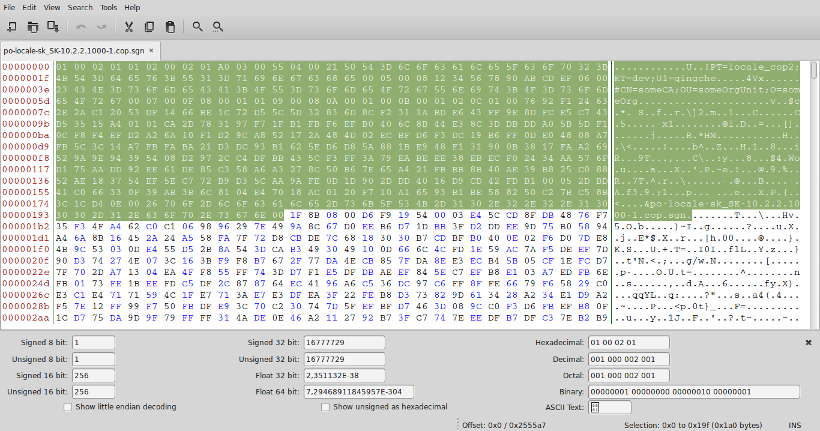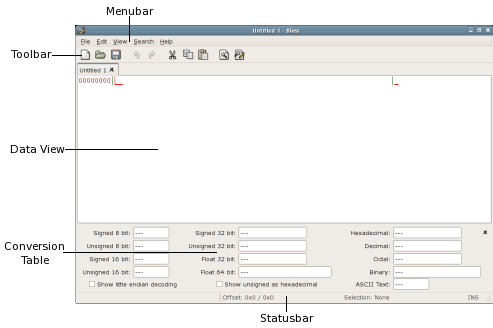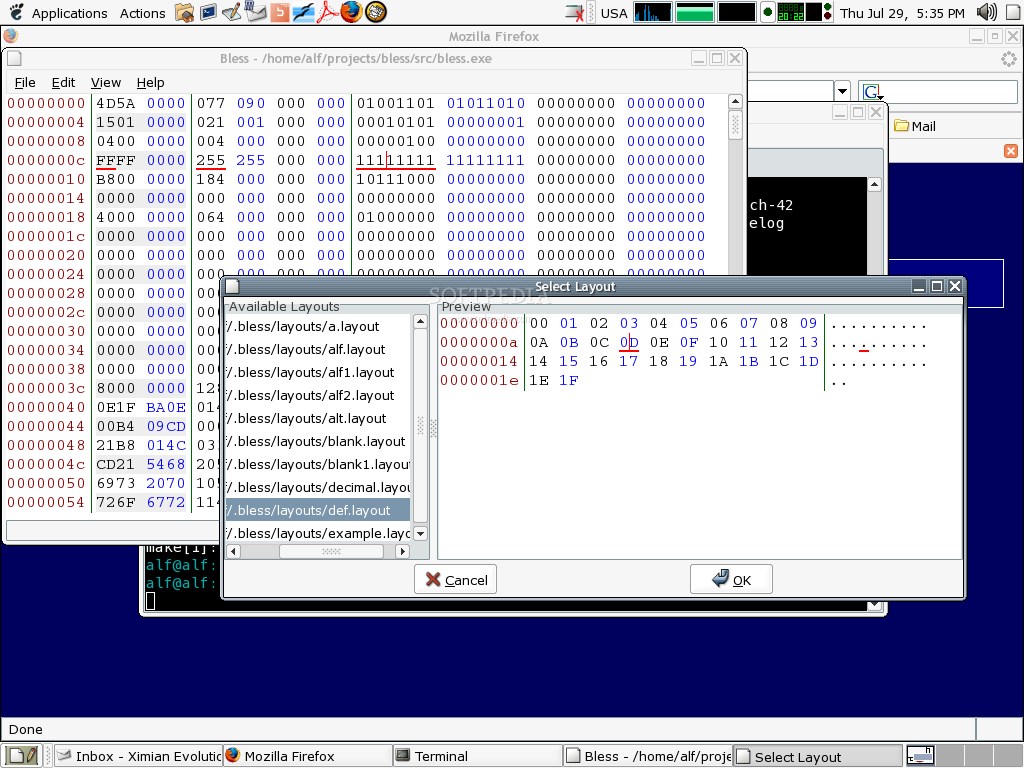Bless is a hex editor for Linux and Windows. It is a high quality, full-featured editor written in the mono programming language. Bless comes packed with excellent features that anyone looking for a hex editor on Linux will love. Here’s how to install it on Linux.
Bless is a hex editor for Linux and Windows. It is a high quality, full-featured editor written in the mono programming language. Bless comes packed with excellent features that anyone looking for a hex editor on Linux will love.
Linux hex editor install – Ubuntu
I wanted to use Windows 10 to check compatibility with my messenger. Bless is a high quality, full featured hex editor. It is written in mono/Gtk# and its primary platform is GNU/Linux. However it should be able to run with. Fedora aarch64 Official bless-0.6.2-5.fc34.aarch64.rpm: High quality, full featured hex editor: Fedora x8664 Official bless-0.6.2-5.fc34.x8664.rpm: High quality. Bless - Gtk# Hex Editor (fork). Contribute to bwrsandman/Bless development by creating an account on GitHub.
Bless hex editor can be installed on Ubuntu through the “Universe” software repository. “Universe” software repository is not enabled by default on all releases of the operating system. It must be enabled before installation.
To enable the “Universe” software repository on Ubuntu, start by launching a terminal window. To do that on Ubuntu, press Ctrl + Alt + T on the desktop, or search for “Terminal” in the app menu.
Once a terminal window is open and ready to go, make use of the add-apt-repository command below to add the “Universe” software repository to your Ubuntu PC.
Following adding the “Universe” software repository, you must run the update command to refresh Ubuntu’s software sources. Using the command below, update the sources.
Once Ubuntu’s software sources are up to date, the Bless hex editor’s installation can begin. Using the apt install command below, install Bless.
Linux hex editor install – Debian
The Bless hex editor is available for Debian users running versions 9 (Stretch), 10 (Buster), 11 (Bullseye), and Debian Sid. To start the installation of Bless on your Debian Linux PC, open up a terminal window.
To open up a terminal window on the Debian Linux desktop, press the Ctrl + Alt + T keyboard combination. Alternatively, search for the “Terminal” app in your app menu.
Once a terminal window is open on your Debian system and ready to go, execute the Apt-get command below to install the Bless hex editor on your computer.
The Bless hex editor is available on Debian Linux, but you should know that you may be missing out on critical features due to how Debian Linux distributes updates.
Suppose you’d like a more up to date release of the Bless hex editor on your Debian Linux PC. Consider following along with the Flatpak installation instructions instead, as Flatpak will have a more up to date release. Alternatively, check out Debian Backports.
Linux hex editor install – Arch Linux
There are two ways to install the Bless hex editor on Arch Linux. If you prefer official Arch Linux packages, the app is available in the “Community” software repository. It is also possible to install the Git release from the AUR if you’d prefer to get faster updates.
Community repo installation
To install the Bless hex editor on Arch Linux via the “Community” software repository. You must have the “Community” software repository enabled on your system. If you do not have “Community” enabled, do the following.
First, open up a terminal window. Once the terminal window is open, use the nano command below to open up the Pacman.conf file for editing.
Look through the Pacman.conf file for “Community” and remove all # symbols from in front and the lines directly below it. Then, save the edits with Ctrl + O and exit the editor with Ctrl + X.
Once outside of the editor, install Bless on your Arch Linux PC with the command below.
AUR installation
To install Bless via the AUR, you will need to install the Trizen AUR helper. To do that, execute the following commands.

Following the installation of Trizen, install the Bless hex editor from the AUR using the command below.
Linux hex editor install – Fedora
The Bless hex editor is available to Fedora Linux users starting at version 32. It is also available on Fedora Rawhide. If you’d like to get Bless working on Fedora Linux, start by opening up a terminal window on the Fedora desktop.
To open up a terminal window on the Fedora Linux desktop, press Ctrl + Alt + T, or search for “Terminal” in the app menu. Once the terminal window is open, use the dnf install command below to get the app working on your computer.


Don’t want to install Bless on Fedora via the dnf command? Bless is also available as a Flatpak. Flatpak is pre-configured on all Fedora Linux systems! To get Bless working via Flatpak, follow the Flatpak instructions below!
Linux hex editor install – OpenSUSE
On OpenSUSE Linux, the Bless hex editor is available for installation via the “Oss” software repository. Currently, the app supports OpenSUSE LEAP 15.1, 15.2, and OpenSUSE Tumbleweed.
To start installing Bless on OpenSUSE Linux, launch a terminal window with Ctrl + Alt + T. Then, execute the following zypper install command below to get the Bless hex editor set up on your Linux PC.
Don’t want to install Bless with the zypper install command? Consider installing it as a Flatpak instead. For more information, follow along with the Flatpak installation instructions.
Linux hex editor install – Flatpak
Bless Hex Editor Download
Bless is available as a Flatpak on the Flathub app store. Bless being a Flatpak app is excellent, especially for those using a Linux distribution that doesn’t support Bless natively.
To start the installation of Bless as a Flatpak, you must enable the Flatpak runtime. To do that, please follow our guide on how to install Flatpak.
Bless Hex Editor Mac

Once you’ve installed the Flatpak runtime on your Linux PC, install the Bless hex editor with the two commands below.